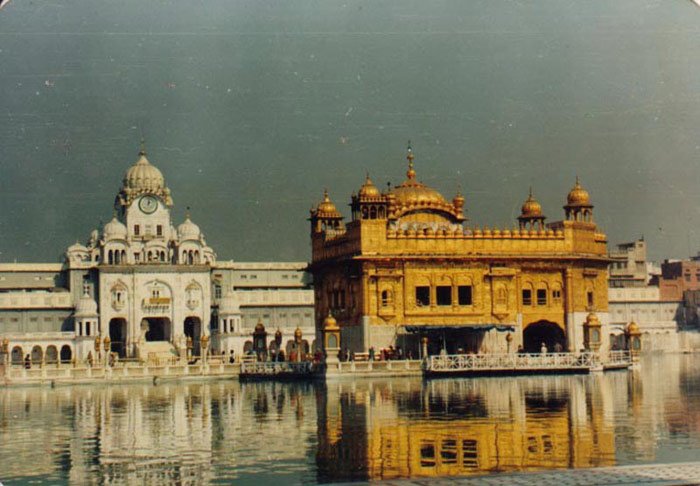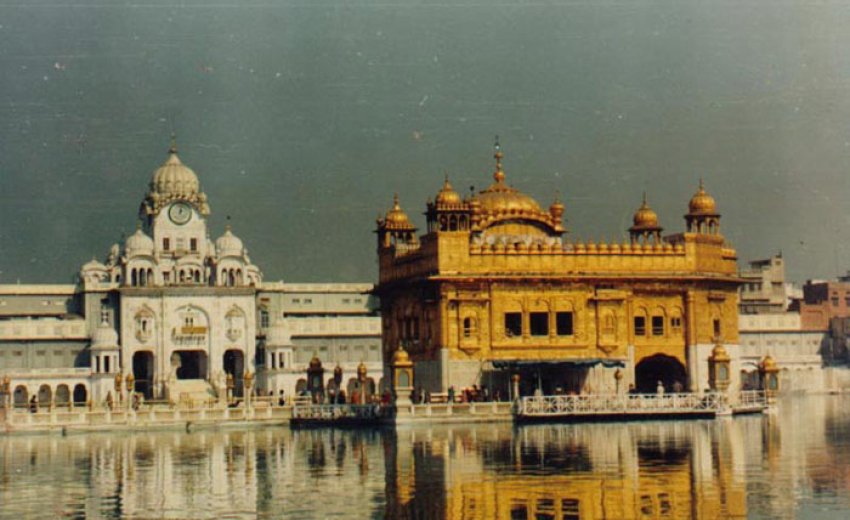31 years ago, almost to the date, Harinderjit Singh remembers newspapers with entire blocks of blank space where there should have been text. Then, the press didn’t have the freedom to tell this story. Today, the people who lived it are telling it themselves.
In June 1984, Punjab became a virtual concentration camp. Journalists had been removed from Punjab by June 1, and Punjabis were cut off from the rest of the world as horrors unfolded around them. After three decades, these eyewitnesses are finally sharing their stories.
Violation Of The Sacred
With a media blackout and strict, gun-enforced curfew in place, the government launched its military assault on the physical epicentre of Sikh religion, Darbar Sahib in Amritsar, which was and is visited by tens of thousands a day, and feeds up to 100,000 for free – religion, caste, and gender no bar.
In 1984, thousands of worshippers gathered in heightened numbers for Guru Arjan Dev Ji’s martyrdom anniversary, were killed during the attack, their lives anonymized by mass cremations. Dozens of other gurudwaras were attacked on the same day, yet we don’t even know how many of their visitors and worshippers were killed.
Those gathered under the golden domes in June 1984 were ordinary people, like the elderly man from the countryside who came to Amritsar for an eye operation, or the woman from the narrow alleyway around Darbar Sahib whose morning routine included visiting the gurudwara, or the sweet vendor who set up shop nearby for the holiday. Each of them are remembered today by survivors of the 1984 violence.
These worshippers did not realize that in a matter of hours, the military would open fire on their bodies and sacred grounds. They did not know that many among them would lie under the blistering sun with their hands tied behind their backs, dying of dehydration, or that adolescent boys, marked as terrorists for merely wearing a turban, would be beaten to death with sticks.
They could not know that in the nights to come, people, like Rajinder Kaur, sealed away during the curfew, would watch from their windows as trucks filled with the bodies of the dead drove through the blackened streets of Amritsar, out towards rural crematoria. An untold number of bodies were dumped in garbage trucks and hurriedly, secretly cremated to cover up the extent of the violence in Punjab.
And it wasn’t limited to Amritsar. The colour of blood rose up from cities across Punjab, from Muktsar to Ludhiana to Patiala. Witnesses from villages all over Punjab remember the reddened sky and the smell of cremations.
“The babies’ stuff [strewn in the gurudwara] is what I remember most,” remembers Manjit Kaur, speaking of a gurudwara a good 150 kilometers from Amritsar. She challenges, through her poignant memories, the often-heard justification and minimization of June 1984: that it only happened because of the militants ‘holed up’ in Darbar Sahib; that it was a quick army operation.
All of these stories are eyewitness testimonies from Sikhs across the world who have shared their stories with the 1984 Living History Project, which is collecting the stories of Sikhs who lived through the brutality, one video testimony at a time. The Sikhs are still filling in the blank spaces.

Spaces For Memory
A five-minute walk east from Darbar Sahib leads you to Jallianwala Bagh, where in 1919, a British general ordered firing on a crowd of unarmed men, women and children. In the decades following the attack, the British provided reparations and relief to the families of the victims.
Today, the public square doubles as a national memorial garden for those who were killed in the massacre. World dignitaries routinely recognize the martyrs honoured there. On May 20, U.S Ambassador to India Richard Verma paid his respects at Jallianwala Bagh for the dead of 1919.
There is still no national garden, no physical space to honour the dead of June 1984. There is still no touchstone by which we can grieve those who gathered to bow their heads on the marble concourse, the massacre of June 1984 still has no institutionally supported space for memorialization.
In a cruel twist of fate, Arjit Singh recalls how his father’s younger brother, Hazura Singh, narrowly escaped Jallianwala Bagh as a young boy, only to die at Darbar Sahib 65 years later. What does it say about our society that Hazura Singh’s death might have received more recognition had he died at the hands of the British instead of Indians?
Today, instead of waiting for their democracy to memorialize the massacre, Sikh youth are carving global virtual spaces for memory by building an online archive of video testimonies from people across the world – from people who remember the media silence to those who remember the sound of thundering tank firings.
Breaking The Public-Private Barrier
Sikhs are realizing that it was not only their sacred grounds that were hijacked – so was their narrative as a community and moreover, their ability to stand stronger with others at risk of similar violence.
Sikh youth whose parents and grandparents lived through that year inherit a silence that has set in, born of the deep betrayal experienced at the hands of their own government. Holocaust scholar and psychoanalyst Dori Laub says that giving testimony is inherent to the process of healing from trauma. The process of being listened to in interviews re-members the dis-membered “self” that was severed from an experience during the moment of trauma. By speaking their histories, Sikhs are speaking themselves back into wholeness.
This is a story of Sikhs who are reclaiming their history. More importantly, this is a story of disenfranchised human beings who are brokering their own process of healing in a new, digital age.
